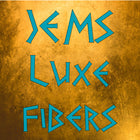Chief Consort
Echidna was a half-woman, half-snake creature in Greek mythology, also known as the "mother of all monsters", as she gave birth to most of the Greek mythical creatures.
The name of Echidna originated from the Greek word chidna meaning Viper and Echidna was exactly that. From the waist down, Echidna possesses the body of a huge snake, from the waist up, the monster resembles a beautiful nymph. Echidna’s upper half is described as being irresistible, possessing fair cheeks and glancing eyes.
Echidna mated with one of the most feared monsters in all of ancient Greek mythology, Typhon. She was his chief consort in Typhon’s war against the gods. The giant serpent Typhon features more prominently in mythology than his mate. Typhon was a giant monstrous serpent, who Hesiod claims is the son of the primordial deities, Gaia and Tartarus.
Echidna was a fearsome monster who is known as the mother of monsters, as she and her mate, Typhon created several monstrous offspring. Echidna’s children are some of the most feared and famous monsters to be found in Greek mythology. Those children included Orthrus, Cerberus, Hydra, Chimera, the Sphinx, The Caucasian Eagle, Ladon, Nemean Lion, Gorgon, the Colchian Dragon and Scylla.
Echidna is believed to be the offspring of two sea gods. The sea gods are the original sea monster Ceto who personified the dangers of the sea, and the primordial sea god Phorcys.
Some make the mother of monsters the offspring of the primordial deity Tartarus and Gaia, the Earth. In these tales, Typhon, Echidna’s mate, is her sibling.
According to Hesiod, the cave-dwelling Echidna did not age, nor could she die. The half-serpent, half-mortal female monster was not invincible. Echidna was believed to represent the natural rotting and decay of the Earth. Echidna, therefore, represented stagnant, foul-smelling water, slime, disease, and sickness. It is believed that Echidna had the ability to produce a toxic poison that could drive people mad.
Gaia created Typhon as a weapon to be used against the king of the gods who lived on mount Olympus, Zeus. Typhon features in the Theogony as an opponent to Zeus. Gaia wanted revenge on Zeus because the almighty god of thunder tended to kill or imprison Gaia’s children.
In ancient Greek myths, monsters were created to test the great heroes, challenge the Greek gods, or do their bidding. The monsters were placed in the path of heroes often to highlight their morality.
The gods on Mount Olympus were attacked by Typhon and Echidna, perhaps in response to the deaths of so many of their offspring.
The pair were a terrifying and formidable force that challenged the king of the gods, Zeus, for control of the cosmos. After a fierce battle, Typhon was defeated by Zeus’ thunderbolt.
The giant snake was imprisoned beneath Mount Etna by Zeus. The king of mount Olympus allowed Echidna and her children to be free.
Echidna is a guardian, goddess, monster, or mother of the sprits that are the alternative to the Olympians, dependent on the source. Regardless of how one views her, as the mother of many of the creatures that Heracles was tasked with killing, her importance to the Greeks is without question.
Most of Echidna’s history centers not around her, but rather on her famous children. Regardless of her parentage, as the Mother of All Monsters, Echidna’s children with Typhon would figure prominently in the tales of nearly every great hero of Greek mythology.
Her title of Mother of All Monsters is well deserved. Her husband, like Echidna herself, was also half-humanoid and half-snake. Their children, however, were dominated by their monstrous sides.
One can presume that Echidna has no love lost for any of the great heroes of Greek mythology. Most of her children were overcome or killed by them. Surely the hero Echidna hated most would be Heracles. In his 12 labors, he bested or killed six of her children.
Available in the following yarn bases. For a listing of all yarn bases click here. Yarn Bases
Care of your hand knit garments
Please hand wash cold or lukewarm water and lay flat to dry. Even though this yarn does contain superwash merino, I do always recommend that you hand wash your knitwear. We use colorfast acid dyes for dying our yarn, and rinse until water runs clear. There may be a chance that some dye may bleed slightly in the first wash of your finished item. This does sometimes happen for speckled yarn and stubborn colors that are prone to bleed. For the first couple of washes, hand wash separately to be sure that no further bleeding.
There are no dye lots. We always try to sell from same dye lots but if not sure, we recommend blending the skeins as you work. Color saturation can differ from different dyelots.




